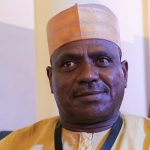-
As system collapse drops to 2 cases – Minister
The federal government has raised at least N125 billion through budgetary interventions and from multilateral financial institutions towards the ongoing electricity grid reforms in the last six years, records have shown.
Daily Trust on Sunday reports that while the funding has been more for the midstream section of the electricity supply value chain, there are other areas whose improvement is crucial to the national grid sophistication.
The structure of the Nigerian Electricity Supply Industry (NESI) is that there is the generation section (upstream), the transmission (midstream) and the distribution which is the downstream section. In 2013, the Nigerian government privatized mostly the generation and distribution sections leaving the transmission to itself under the Transmission Company of Nigeria (TCN).
Since then, there have been issues of getting the private operators to meet their commitments for the Generation Companies (GenCos) and the Distribution Companies (DisCos) while the federal government optimizes transmission.
According to the latest update on on-grid electricity investments announced by the Minister of Power, Engr. Abubakar D. Aliyu, the installed capacity for the GenCos has risen to 18,000 megawatts (MW), that was a rise of over 11,000MW from about 7,000MW in 2013 due to overhauls of turbines and plant expansion programmes of the private firms. Further data from the Independent System Operator (ISO) section of TCN indicates that the GenCos can immediately generate 7,600MW of electricity if the transmission and distribution networks can take that.
On the part of transmission, the electricity wheeling capacity has risen to over 8,000MW from about 5,500MW in 2013 when transmission infrastructure was managed by Manitoba Hydro International Nigeria Ltd (MHINL).
According to industry experts, transmission assets which are likened to the transporter of the product (electricity) at every point, should have a higher capacity than generation and distribution. However, the section had suffered neglect in the past and as observed in contemporary records, the 18,000MW installed capacity of at least 27 of the grid-connected GenCos is higher than the over 8,000MW simulated transmission capacity while distribution is said to have up to 6,000MW, according to the Association of Nigerian Electricity Distributors (ANED).
Towards improving on the transmission grid, the Minister of Power, Engr. Aliyu, at a recent briefing said the federal government has many key grid initiatives with N831bn earmarked for transmission projects between 2015 and 2021. The breakdown shows that more than N125.2bn was budgeted between 2015 and 2021 for developing the transmission network. Another $1.7bn or N706bn at N415 to a dollar official rate, has come from development financiers like the World Bank, African Development Bank (AfDB), French development agency – AFD, Japanese International Cooperation Agency (JICA) and others transmission projects.
Still, the Central Bank of Nigeria (CBN) is also providing $250m (about N103bn) for the rehabilitation of critical interfaces between transmission and distribution to increase and stabilize power delivery. Through the Siemens Presidential Power Initiative (PPI), additional $2bn (N830.5bn) or more will come to the transmission grid.
“This is almost $4bn secured by this administration to augment the grid. It should be noted that many of these funds are being actively spent and the results will be felt over time. We are working tirelessly to ensure that all of these investments translate to incremental delivered power,” said Aliyu.
Further records on transmission projects obtained by this paper indicated that 135 transmission lines, substations and associated grid infrastructure projects are ongoing. They include a 330 kilovolts (kV) quad line from Alaoji (Abia) to Onitsha (Anambra), from Delta GenCo to 330kV Benin transmission substation; and a 330kV transmission line from Kano to Katsina. The Lagos/Ogun Transmission Infrastructure Project funded by JICA is also onstream.
Already, 30 substation projects and 12 transmission lines have been completed to boost bulk power evacuation. Some of these are the second Egbin-Ajah transmission line in Lagos; and the new 330/132/33 kilovolts (kV) NDPHC Lafia transmission substation.
Just a fortnight ago, the acting Managing Director of TCN, Engr. Sule Ahmed Abdulaziz, announced the delivery of 15 power transformers to complete over 10 ongoing power substation projects under the Siemens project.
Providing further updates on the Siemens deal, the power minister said, “The pre-engineering segment of the PPI contract is complete and we expect contract offers on 127 transmission and distribution projects from Siemens. Recently through the CBN intervention for transmission-distribution interfaces, we have also awarded more than 30 substation rehabilitations and 1,570MVA transformer capacity upgrades with 34 critical transformers to be installed or replaced.”
Nigeria reaping gains of reforms
With the over N1trn being coughed by the Nigerian government on grid improvement, the minister said Nigeria is already reaping the gains. Available statistics shows that system or grid collapses that have been a menace have sharply declined in the last few years.
Daily Trust on Sunday had reported that in only four collapses occurred in 2020 while two were recorded in 2021, being the lowest in 13 years. Analysis of grid operation reports obtained by this paper indicates that since 2009 to 2021, the Nigerian grid has witnessed 254 system collapses. 142 total and partial system collapses occurred from 2009 to 2013. The system recorded another 10 others from 2014 to 2021 yet during the period the power sector utilities were privatised.
Speaking on the latest decline in system collapse, the minister said: “It should be noted that as we continue to improve overall power supply levels, our investments have improved stability of the grid through the efforts of our System Operator (under TCN). Under this administration, grid stability has drastically improved.
“In 2021, the nation only had two adverse grid events (partial or full collapses of the grid). Compare this to a peak of 42 events in 2010 and greater than 10 events every year before 2020,” Aliyu explained.
In all this, the distribution section still has hiccups that affect the entire value chain. There have been complaints from electricity consumers recently of declining electricity supply. A tailor in Abuja, Muhammad Umar, said whenever it seems there is power supply lasting for hours, it means the operators are coming with estimated bills.
Matthew Jones who lives in Mararaba area of Nasarawa State worried about how he would operate his cold store amidst the fuel scarcity.
Some of the DisCos including those of Abuja, Kaduna and Kano, had issued statements blaming the poor supply of electricity on poor energy from the transmission end. However, TCN which manages the transmission grid noted that power generation had dropped earlier this month by around 4,000Mw at various intervals due to gas supply constraint for the thermal plants and low water level at the hydropower stations, insisting that the transmission network was robust to wheel generated energy to consumers through DisCos.
The minister also confirmed the low generation while addressing the press but noted that the issues had been resolved. He reiterated that TCN has carried out a series of reinforcements of transmission lines across the country, and complete overhaul of its sub-stations to boost energy transmission and use.
For distribution, since 2014, CBN had given N213bn Nigerian Electricity market Stabilisation Fund (NEMSF I) loan to DisCos to clear legacy issues and stabilize and another N200bn NEMSF II loan is being disbursed for DisCos to acquire tools and equipment to strengthen capacity and as meet their recurrent obligations.
Aliyu was also hopeful that the Siemens project and that of the CBN intervention in distribution networks can turnaround the downstream section of the grid. Siemens plans to have a 7,000MW daily national grid this year; this will be over 2,000MW increase from the current 5,000MW peak generation.
“NESI needs to make better utilization of the grid-based power plants. The only way this can happen is through the improvement of the grid,” Aliyu held.

 Join Daily Trust WhatsApp Community For Quick Access To News and Happenings Around You.
Join Daily Trust WhatsApp Community For Quick Access To News and Happenings Around You.



